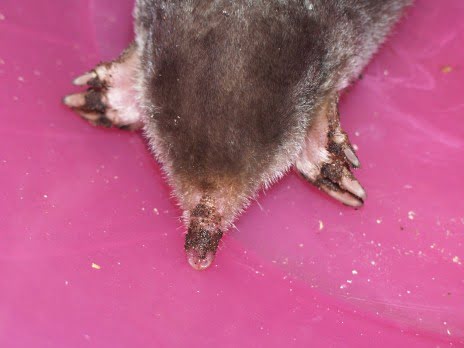MOLES
Moles are members of the family (Talpidae) of mammals in the order Insectivora that live underground, burrowing holes. Some species are aquatic or semi-aquatic. They have cylindrical bodies covered in fur with small or covered eyes; the ears are generally not visible. They feed on small invertebrate animals living under ground. Moles can be found in North America, Europe and Asia.
Moles are considered to be an agricultural pest in some countries, while in others such as Germany they are a protected species. Problems caused are cited as contamination of silage with soil particles making it unpalatable to animals, the covering of pasture with fresh soil reducing its size and yield , damage to agricultural machinery by the exposure of stones, damage to young plants through disturbance of the soil, weed invasion of pasture through exposure of fresh tilled soil, and damage to drainage systems and watercourses. Other species such as weasels and voles may use mole tunnels to gain access to enclosed areas or plant roots.
Moles that burrow in the lawns of humans can disturb the earth, raising molehills and causing enough aesthetic problems to be considered as pests. They do however benefit the soil by aerating and tilling it, adding to its fertility. Contary to popular belief, moles don’t eat plant roots.
Moles are often said to be blind but this is incorrect. The mole has eyes and ears but they are incredibly small so they do not become filled with earth when digging. The eyes are the size of pinheads and are normally kept closed. Moles’ eyesight is poor. They can see movement and tell light from dark, but cannot distinguish colours. The ears, with their openings hidden in the fur, do not protude outside the body. There is an area of bare pink skin on the snout that is very sensitive to touch. Sensitive pimples cover the surface, detecting tiny movements, temperature change, prey and other moles through scent. The mole’s long canine teeth are sharp and pierce the hard outer skeleton of insect prey. The tail is held upwards to feel its way when running backwards in tunnels. Mole fur is very fine and velvety and usually black, it can point in any direction with ease, so is specially adapted for life in tunnels.

